Key Concepts: The Rise of the Marathas | Social Studies (SST) Class 8 PDF Download
| Table of contents |

|
| Who are the Marathas? |

|
| Foundation of Maratha Power and the Rise of Shivaji |

|
| The Marathas after Shivaji |

|
| Maratha Administration |

|
| Cultural Revival |

|
Who are the Marathas?
- The Marathas were a group of people native to the Deccan Plateau, mainly in present-day Maharashtra.
- Their identity is tied to the Marathi language, which has developed a rich literary tradition since the 12th century.
- The region saw the influence of the Bhakti movement led by saints like Dnyaneshwar, Namdev, Tukaram, and Ramdas, who spread ideas of devotion, equality, and moral conduct.
- This cultural and spiritual unity later helped the Marathas form a powerful political community.
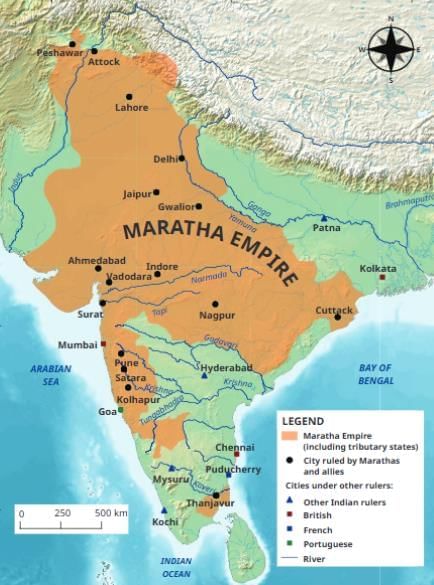
Foundation of Maratha Power and the Rise of Shivaji
Shivaji Bhonsle (born 1630) was the founder of the Maratha Empire. He grew up under the guidance of his mother, Jijabai and developed the ideal of Swarājya (self-rule). 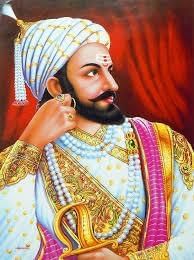 Began military campaigns at the age of 16 by capturing forts around Pune and strengthening them.
Began military campaigns at the age of 16 by capturing forts around Pune and strengthening them.
Key strategies and achievements:
- Guerrilla warfare: Small, fast-moving attacks using knowledge of terrain.
- Strong navy: Founded in 1657 to protect coastal areas and challenge European powers.
- Victory over Afzal Khan (Bijapur general) at Pratapgad.
- Escape from Agra after being imprisoned by Aurangzeb (1666).
- Sacking of Surat, displaying the power and wealth of the Marathas.
- Coronation at Raigad (1674) — took the title Shri Raja Shiva Chhatrapati.
- Dakshina Digvijaya (1677): Southern campaign expanding his rule.
- Forbade the slave trade by Europeans.
Shivaji’s leadership combined military genius, administrative skill, and cultural revival.
The Marathas after Shivaji
- After Shivaji’s death (1680), his son Sambhaji succeeded him but was captured and executed by Aurangzeb.
- Rajaram continued resistance from Gingee Fort (Tamil Nadu); his wife, Tarabai, later led the struggle, expanding northward.
- The Mughal Empire weakened after Aurangzeb’s death.
- Under Peshwas (Prime Ministers) like Bajirao I and Nanasaheb, Marathas expanded across India.
- Controlled Delhi by the mid-18th century and reached as far as Lahore and Peshawar.
- Suffered defeat in the Third Battle of Panipat (1761) but regained power under Peshwa Madhavrao I.
- Defeated by the British in the Third Anglo-Maratha War (1818), ending their dominance.
Maratha Administration
Civilian administration
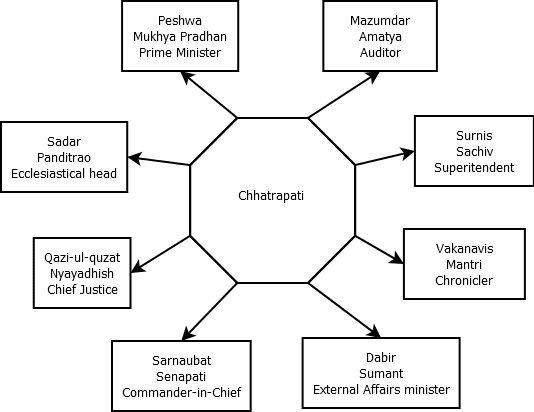
- Shivaji established a centralised government and abolished hereditary posts. Officials were paid salaries instead of land grants (jagirs).
- Created a Council of Eight Ministers (Ashta Pradhan Mandal):
1. Pradhan – Prime Minister
2. Amatya – Finance Minister
3. Mantri – Intelligence
4. Sachiv – Record Keeper
5. Nyayadhish – Chief Justice
6. Panditrao – Religious Affairs
7. Sumant – Foreign Affairs
8. Senapati – Commander-in-Chief
Taxes levied:
- Chauth – 25% of revenue.
- Sardeshmukhi – Additional 10%.
Shivaji cared for his soldiers’ families and protected citizens’ property and environment.
Military administration
- The army comprised infantry, cavalry, and navy.
- Two main cavalry types:
1. Bargirs – Horses and arms funded by the state.
2. Shiledars – Self-equipped soldiers. - Used swords, lances, guns, and rockets.
- Forts were the backbone of Maratha power; they controlled trade routes and provided defence.
- Emphasis on discipline and loyalty is inspired by Shivaji’s values.
Maritime supremacy
- The Maratha Navy protected the west coast and trade routes.
- Kanhoji Angre, a legendary naval leader, defeated European powers repeatedly.
- Europeans had to buy trade passes (cartaz); Marathas reversed this practice and demanded passes from them.
- The navy symbolised the Indian challenge to European maritime dominance.
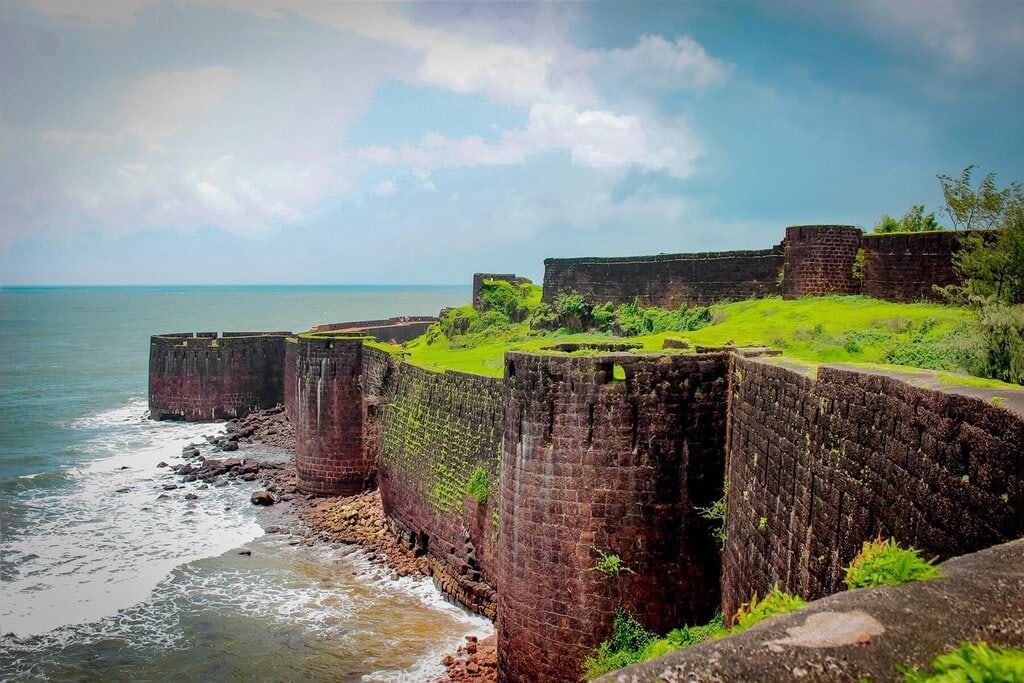 Vijayadurg Fort
Vijayadurg Fort
Judicial system
- Justice was delivered through local Panchayats (assemblies of elders and officials).
- Capital punishment was rarely used.
- Kotwals maintained peace and order in major towns like Pune and Indore.
Trade networks
- Shivaji promoted maritime trade with ports in Arabia, Africa, and Southeast Asia.
- Goods traded: textiles, gold, and spices.
- Built roads, bridges, and ferries to improve internal communication.
- Maratha ships sailed as far as Mocha (Yemen), Muscat (Oman), and Malacca (Malaysia).
Cultural Revival
- Shivaji revived Hindu traditions while respecting all religions.
- His seal carried a Sanskrit inscription symbolising welfare and sovereignty.
- Commissioned Rājya-Vyavahāra-Koṣha, replacing Persian with Sanskrit-Marathi administrative terms.
- Promoted Marathi and Sanskrit literature, rebuilt temples, and encouraged arts and crafts.
- His ideals gave Indians a renewed sense of cultural pride and independence.
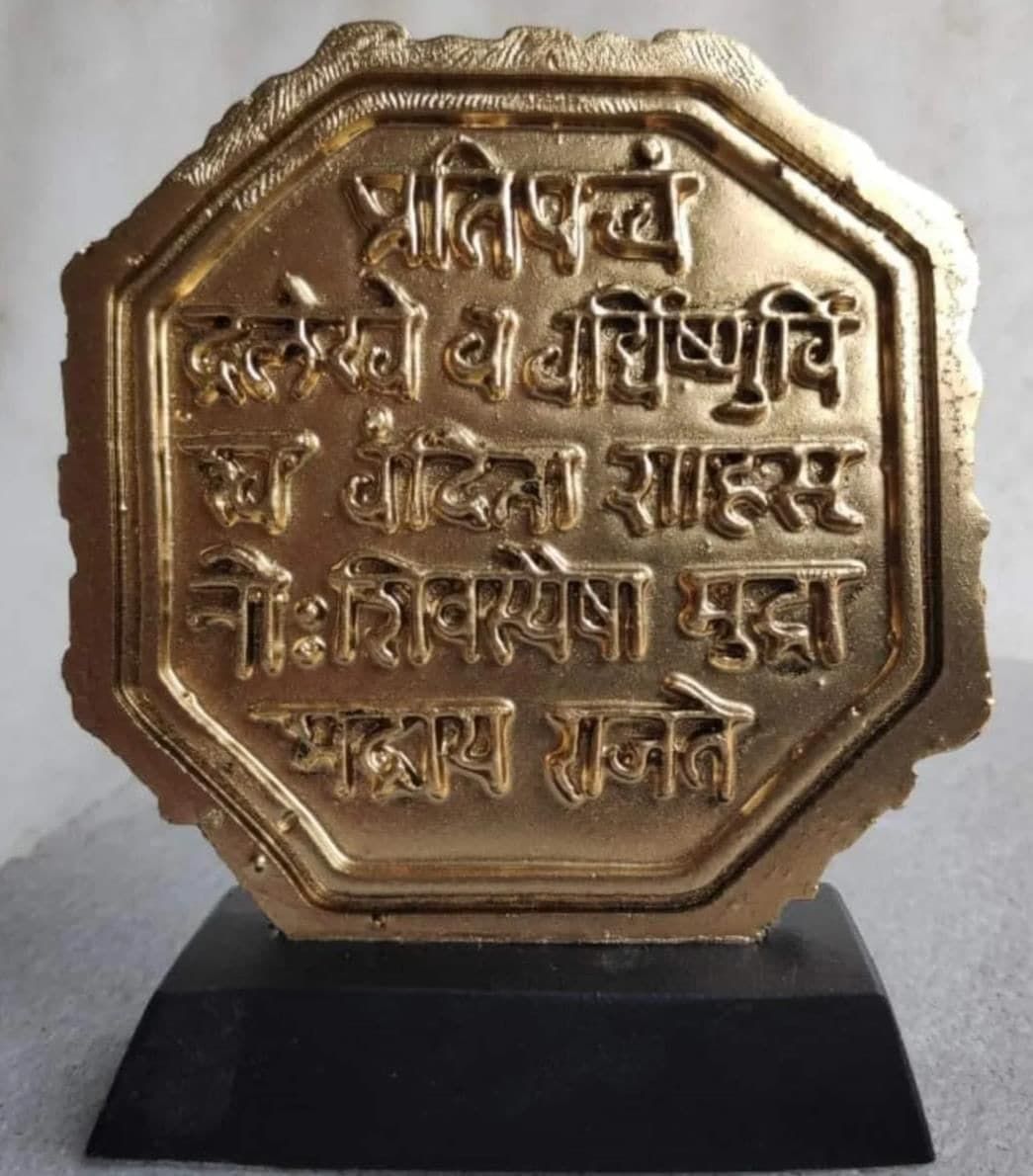 Maratha Seal
Maratha Seal
In focus: Thanjavur
- Ekoji (Shivaji’s half-brother) established Maratha rule in Thanjavur (Tamil Nadu).
- Encouraged a blend of Marathi, Tamil, and Telugu cultures.
Serfoji II, the most prominent ruler:
- Established Dhanwantari Mahal, a medical centre offering Indian and Western treatment.
- Started a printing press (one of India’s first by an Indian ruler).
- Supported Carnatic music and Bharatanatyam dance.
- Inscribed the history of the Bhonsle family on the Brihadishwara Temple walls.
The Maratha legacy
- The Marathas built the largest Indian empire before the British.
- Their rule emphasised self-governance, cultural revival, and military strength.
- Promoted religious tolerance, administrative reform, and patriotic ideals.
- Their Swarājya movement later inspired India’s freedom struggle.
- The British effectively took India from the Marathas, not directly from the Mughals.
|
69 videos|431 docs|46 tests
|
FAQs on Key Concepts: The Rise of the Marathas - Social Studies (SST) Class 8
| 1. Who were the Marathas and what role did they play in Indian history? |  |
| 2. What was the foundation of Maratha power and how did Shivaji contribute to it? |  |
| 3. How did the Marathas evolve after Shivaji's reign? |  |
| 4. What was the administrative structure of the Maratha Empire? |  |
| 5. What contributions did the Marathas make to cultural revival in India? |  |















